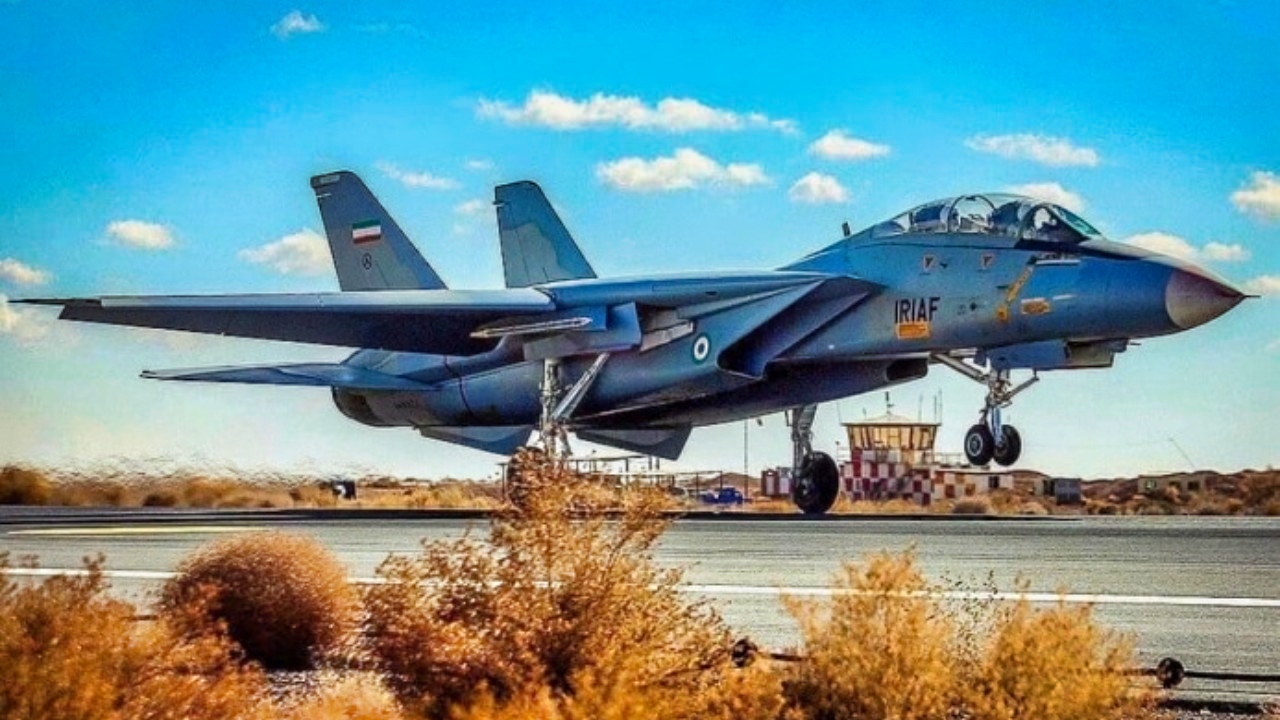Key Points and Summary – Iran has launched new naval military drills in the Indian Ocean, a move designed to project strength as a deadline for nuclear negotiations looms and the threat of new Israeli strikes rises.
-However, this analysis argues the drills are likely a “giant bluff.”
-Iran’s military is in “rough shape” following the recent “12-Day War” with Israel, which reportedly “gutted” its air defenses.
-With an obsolete air force and limited power projection capabilities, this show of force is likely a tool for domestic propaganda rather than a signal of true military readiness.
Iran Holds Drills – But Its Military Is In Rough Shape
While Iran’s leadership mulls a possible return to diplomacy with Washington, despite continued threats of military strikes from high-level Iranian officials, the country has launched its first solo military exercises since the end of the 12-Day War with Israel.
On Thursday, August 21, Iranian Navy units launched missiles and drones at targets in the Indian Ocean as part of the “Sustainable Power 1404” drill.
While technically routine, the latest drills come as the Islamic Republic attempts to project strength amid talk of renewed Israeli strikes that could arrive before the end of the year. The latest drills were revealed in an Iranian state television broadcast, although no video footage of the exercise was aired.
“These drills take place around a month after the Iran-Russia drill under the name Casarex 2025, which took place in Iran’s northern waters (Caspian Sea),” the report said, adding that the drills “are in Iran’s southern waters.”
But is this latest projection of power one giant bluff? With an end-of-August deadline for a return to nuclear negotiations looming and a significantly weakened military, Iran is looking down the barrel of a gun. Between the prospect of the reimposition of pre-2015 sanctions and no real hope of competing militarily with the United States and Israel, the drills might only serve as a domestic propaganda tool.
Iran’s Military Is Battered
Israel’s 12-day campaign gutted Iran’s air defenses, smashing radar sites and SAM batteries. On June 17, Israel said that it had destroyed 70 Iranian air defense batteries since the beginning of Operation Rising Lion – 40 of which were hit during the first 24 hours of the war.
Before the campaign began, Iran depended on mostly legacy Russian-supplied SAMs like the S-300 and SA-6, along with aging radar infrastructure – and the systems lost have yet to be upgraded. Instead, Iran replaced damaged units with unspecified systems that were previously kept in storage.
Not only would Iran fare badly in the event of future Israeli or U.S. strikes, but its air force isn’t up to the job of fighting back.
The backbone of Iran’s air fleet consists largely of aging American-made F-14s, F-4s, and F-5s from the 1970s – supplemented by older Chinese and Soviet models that lack the ability to counter modern stealth aircraft like Israel’s F-35I Adir.
Iran’s conventional ground troop force isn’t much use, either. Its 610,000 active-duty personnel and 350,000 reserve soldiers are not equipped, prepared, or suited for external power projection, instead serving a large defensive role. But without the hardware, Iran could have twice as many soldiers and it still wouldn’t make much difference in the event of a new Israeli campaign.
And for all the recent talk from Iranian officials about its strike power, Iranian forces cannot do much more than strike nearby U.S. targets – like the Al Udeid Air Base in Qatar, which was left unscathed following Iranian strikes earlier this summer – without a more formidable naval force.
That being said, Iranian lawmaker Amir Hayat-Moqaddam claimed this week that Tehran could target U.S. cities from offshore positions, and that every European country is already within range of its missiles – arguing that strikes are possible “using Iranian warships and vessels.”
Missiles may well be the best Iran has in terms of military assets, and Iran has already deployed warships to the Atlantic.
In 2021, it deployed the Makran and Sahand – but analysts note that these kinds of missions are rare and place a huge toll on its naval forces and aging fleet of vessels.
Assuming that Iran were to utilize its growing arsenal of ballistic and cruise missiles in a renewed conflict with Israel, however, one problem remains: Israel’s far-superior air defenses, advanced aircraft, and crucially, its backing from Washington.
About the Author:
Jack Buckby is a British author, counter-extremism researcher, and journalist based in New York. Reporting on the U.K., Europe, and the U.S., he works to analyze and understand left-wing and right-wing radicalization, and reports on Western governments’ approaches to the pressing issues of today. His books and research papers explore these themes and propose pragmatic solutions to our increasingly polarized society. His latest book is The Truth Teller: RFK Jr. and the Case for a Post-Partisan Presidency.
Military Affairs
China’s Stealth Air Force Has 1 Mission
China’s J-20 Mighty Dragon Is Built for War
The F-22 Raptor Is Getting a Makeover
